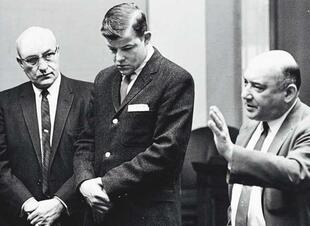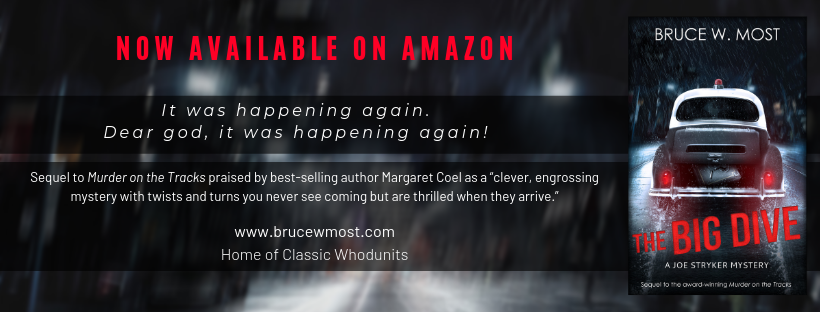|
Like many authors, I draw inspiration for stories from real life. Why make up stuff when our lives, our history, our culture offer an abundance of rich material? Truth is stranger than fiction. The personal fallout for Joe Stryker in the wake of his partner’s murder drives the story. But the intersecting plotlines that created his nightmare derive from two very real events in Denver and Colorado history.  Winstanley, center, during his trial. Credit: The Denver Post Winstanley, center, during his trial. Credit: The Denver Post The first is “burglars in blue”—or dark riders as I often refer to them in the book—a scandal that ripped open the soul of the Denver Police Department in the early 1960s. The second historical event was the internment of 120,000 Japanese Americans in “relocation camps” during World War II. I’ll examine the camps in future posts. After all these years, they remain a disturbing chapter in American history. First, however, let’s explore the piece of Denver history that caught my eye and sent me on the way to writing The Big Dive: Denver’s own “burglars in blue.” If you lived in Colorado in 1961, and read newspapers or listened to the radio, you witnessed the biggest scandal to ever rock the Denver police department. The story even went international. A Denver Post article at the time called it the “year of shame for the Denver Police Department.” Shame it was. From the start of 1961, to its end, investigators hauled in nearly 50 Denver police officers, along with a sheriff, deputies, and civilians, for cracking safes and committing other property crimes in over 200 heists, netting $250,000. Over 40 people went to prison. Sadly, the officers stole from the very businesses they were sworn to protect on their beats. How did the scandal break? It started out quietly enough. Police arrested three Denver cops on New Year’s Day, 1961, and charged them with burglary. Investigators at the time did not realize how far that little string would unravel. The arrests came out of a confession from a fellow Denver cop, Patrolman Arthur R. Winstanley, age 26. Winstanley had been arrested the year before, August 1960, when—get this—a safe fell out of the trunk of his personal car right in front a patrol car responding to a call about that very break-in. Guess where the idea of my book cover came from? Winstanley was quickly tried and convicted. But while free on bail during his appeal, he inexplicably committed another break-in for which he was caught Christmas night, 1960. That’s when Winstanley fingered the three cops arrested New Year’s Day. But that proved just the beginning. As the investigation spread, more officers were arrested. The darkest moment came on September 30, 1961, when nearly three dozen cops turned in their badges and were arrested. It became known as “Black Saturday.” The arrests knocked out seven percent of the department’s officers. At the time, it was the biggest and most public case of police corruption in the nation’s history. Years later, Winstanley published an account of his criminal past. Aptly, he titled it Burglars in Blue. The book provided me with another rich source for research. One final note. The Big Dive takes place in 1951, ten years before the scandal broke. You might say I took liberties with the historical facts, as fiction writers often do. It’s a novel, after all, not a docudrama about the scandal. However, police investigations at the time revealed that these corrupt cops had been burglarizing businesses for 15 years before the scandal surfaced. I hope you have found this tale of greed and corruption as fascinating as I did. In my next blog, I’ll poke deeper into the crimes and burglars in blue behind them. If you read my novel, perhaps you’ll spot details I “stole” from history. Feel free to leave comments, ask questions, or raise topics you’d like addressed in future posts. And share my posts with friends who enjoy mysteries.
0 Comments
Leave a Reply. |
Bruce Most is an award-winning mystery novelist and short-story writer. His latest novel, The Big Dive, is the sequel to the award-winning Murder on the Tracks, which features a street cop seeking redemption while investigating a string of murders in 1949 Denver. His award-winning Rope Burn involves cattle rustling and murder in contemporary Wyoming ranch country. Bonded for Murder and Missing Bonds features feisty Denver bail bondswoman, Ruby Dark. Archives
February 2022
Categories |

 RSS Feed
RSS Feed